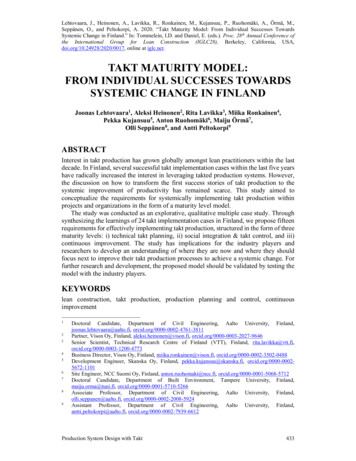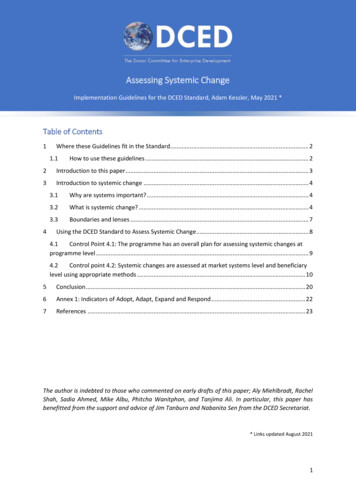
Transcription
Assessing Systemic ChangeImplementation Guidelines for the DCED Standard, Adam Kessler, May 2021 *Table of Contents1Where these Guidelines fit in the Standard. 21.1How to use these guidelines . 22Introduction to this paper . 33Introduction to systemic change . 443.1Why are systems important? . 43.2What is systemic change? . 43.3Boundaries and lenses . 7Using the DCED Standard to Assess Systemic Change . 84.1Control Point 4.1: The programme has an overall plan for assessing systemic changes atprogramme level . 94.2Control point 4.2: Systemic changes are assessed at market systems level and beneficiarylevel using appropriate methods . 105Conclusion . 206Annex 1: Indicators of Adopt, Adapt, Expand and Respond . 227References . 23The author is indebted to those who commented on early drafts of this paper; Aly Miehlbradt, RachelShah, Sadia Ahmed, Mike Albu, Phitcha Wanitphon, and Tanjima Ali. In particular, this paper hasbenefitted from the support and advice of Jim Tanburn and Nabanita Sen from the DCED Secretariat.* Links updated August 20211
1Where these Guidelines fit in the StandardThe DCED Standard specifies seven elements of a successful results measurement system. This guidecovers the fourth element; capturing wider change in the system or market. For guidance on the othersix elements of the Standard, visit the DCED website, or click on the links below.1.2.3.4.5.6.7.Articulating the Results ChainDefining Indicators of Change and other information needsMeasuring Attributable Change (see here and here)Capturing Wider Change in the System or MarketTracking Costs and ImpactReporting Costs and ResultsManaging the System for Results Measurement1.1 How to use these guidelinesThese guidelines are for programmes implementing the DCED Standard for Results Measurement inPrivate Sector Development. The DCED Standard provides a practical framework for programmes tomonitor their progress towards their objectives, enabling them to better measure, manage anddemonstrate results.The Standard specifies two control points for assessing systemic change. Each control point is furtherbroken into compliance criteria, which indicate whether the control points are met or not. For eachcontrol point, this guide provides an explanation of what they mean, and advice on how to comply. Italso links to further guidance and resources. Both control points are recommended, but not requiredto meet the DCED Standard.Use these guidelines to better understand what the DCED Standard recommends, and how to achieveit. By following these recommendations, you will strengthen the quality of your results measurementsystem, and be better able to measure, manage, and demonstrate your results.These guidelines are a work in progress, and we hope to update them in future. If you have anysuggestions or contributions, please email admin@enterprise-development.org.2
2Introduction to this paperIn 2014, a previous edition of this guidance noted that systemic change lacks a “broadly accepteddefinition”. This remains the case today. For example, the BEAM Exchange argued that “thecommunities that use market systems approaches have struggled to define what constitutes systemicchange and the pathways to achieve it.” A recent stocktake for USAID found “no single, comprehensiveconceptual perspective on systemic change.”1A universally accepted definition of systemic change will probably never be developed. Fortunately, itis not required. Practitioners agree on many of the characteristics of systemic change, and haveincreasing experience in conducting simple, practical assessments that explore broader changes fromprogramme activities. This guide draws on this experience, with the aim of supporting practitioners tounderstand the systems in which they work, how and why these systems are changing, and the impactfor people living in poverty. We avoid in-depth theoretical discussions, although references areprovided should the reader want to explore further.This paper is aimed at users of the DCED Standard, a practical framework for measuring, using, andreporting results in private sector development. The Standard aims to set a minimum acceptable levelof monitoring, which can be verified by independent consultants during an ‘audit.’ Consequently, weoutline the criteria that a programme aiming to measure systemic change must meet to pass an audit.It should be noted that programmes using the DCED Standard are not required to have an audit, andthose that do can choose to skip the topic of systemic change. This recognises that methodologies forassessing systemic change, while critical to our work, are still in an experimental stage. We believethat there are many opportunities to improve conceptual and practical assessments of systemicchange, and welcome innovation and experimentation in this field.Section 3 of this guidance provides a brief introduction to systemic change, and why it is important.We avoid a crisp definition, instead introducing three ‘rules of thumb’ for identifying systemic changes.Section 4 details the criteria of the DCED Standard when assessing systemic change and providesinformation on how a programme can comply with them. Section 5 concludes with some keymessages.Key Resource: A Pragmatic Approach to Assessing System ChangeThis guidance is informed by the approach developed in the 2020 paper “A Pragmatic Approach toAssessing System Change”, co-authored by the DCED, Springfield Centre, Miehlbradt Consulting Ltdand Hans Posthumus Consultancy.The Pragmatic Approach provides a much more detailed description of how systemic change canbe assessed, with worked examples to help practitioners implement the advice. It is based onpractical experience from market systems programmes. The Pragmatic Approach, including a briefoverview and a full guidance paper, can be downloaded here.1Jenal (2019), Measuring Systemic Change in Market Systems Development – A Stock Taking . USAID.3
3Introduction to systemic change3.1 Why are systems important?There is an old saying in development: “Give a man a fish and you feed him for a day; teach a man tofish and you feed him for a lifetime.”There is a lot of truth to this proverb. Giving food away for free may help the recipients in the shortterm but it is an expensive and unsustainable solution. Providing training can help people produce thefood they need to live an independent, dignified life.The key insight of systems thinking, however, is that the proverb is incomplete. It focuses on theindividual who receives the training but does not consider the broader system that they need to makea living. For example, there is no point in learning to fish if you do not have fishing equipment and themeans to repair it. Fishing may not be a viable livelihood if the river is polluted, or if fish stocks havebeen depleted by overfishing. If the trainee can catch fish, they need access to a market where theycan sell it at a fair price, and refrigeration to stop it going bad. As the gendered language of the proverbsuggests, fisherwomen may be denied the same opportunities as men.2The example demonstrates that we are dependent for our livelihoods on market systems, made upof “intricate webs of players, actions and interactions that take time and effort to understand.”3 Theseare often referred to as ‘complex’ systems, due to the unpredictable relationships between differentparts of the system. Each member of the system will have a different viewpoint on what is (and whatis not) working. The perspective of the fisherwomen, for example, is likely to be different to that of amarket stall owner. Moreover, any change in the system could have unpredictable consequences. Forexample, if many people are taught to fish, this might open more opportunities for people living inpoverty – or flood the market and lower prices.To create inclusive economic opportunities, we need to be able to understand and influence thesystems that people experiencing poverty live and work in.3.2 What is systemic change?The DCED Standard recommends that programmes assess the changes that they facilitate in thesystem or market, often referred to as systemic change. This enables practitioners to learn moreabout the market system, track the emerging results of their intervention, and continually adapt theirapproach to increase their impact. It will also enable programmes to assess and report the full rangeof benefits that they are contributing to, demonstrating the value of a market systems developmentapproach.As discussed above, a precise definition of systemic change has proved elusive. We provide a broaddefinition here, and three ‘rules of thumb’ to help identify whether a change can credibly beconsidered systemic.23This example is taken from Systems Thinking: An Introduction for Oxfam Programme Staff (2015).Ripley and Nippard (2014), Making Sense of Messiness.4
3.2.1 Overall definitionA systemic change is a modification to how a system works, and what happens as a result.4Consequently, to define a ‘systemic change’, it is first necessary to define the elements that make upa market system. The M4P Operational Guide outlines a widely-used approach to defining andanalysing market systems, though programmes are welcome to follow alternative approaches.5We propose three rules of thumb to identify whether a change is ‘systemic’. Firstly, systemic changeshould be sustainable, continuing without ongoing input from the programme. Secondly, systemicchange should be scalable, capable of benefitting increasing numbers of people over time. Finally,systemic change should be resilient, adapting and enduring despite changes in circumstances.The DCED Standard can accept a variety of definitions of systemic change from programmes, if theyare consistent with the three rules of thumb.3.2.2 SustainableThe first rule of thumb is that a ‘systemic change’ continues to influence the market in the medium tolong term, without further donor assistance.This criterion is not met by many common development interventions. For example, training has asustainable impact in the short-term, as the participant might continue to use practices once thetraining is completed. Handing out assets, such as goats or agricultural equipment, is sustainable inthe short-term because the recipient can continue to use them. Eventually, however, trainingparticipants are likely to forget what they have learned. Livestock can get diseases or be sold, whileagricultural equipment might break. Consequently, the sustainability of these results is limited.More sustainable (and hence more systemic) results change the roles taken by businesses,governments, or other market actors, and the formal and informal rules that govern the market.6 Forexample, rather than providing training directly, the programme might support the development of atraining centre that could provide educational courses at a reasonable cost, so participants couldcontinue to update their skills. Rather than providing assets, the programme might work with financialproviders, agricultural input providers, machinery retailers, or vets to ensure that project participantscould continue to buy and maintain livestock or agricultural machinery after the end of the project.73.2.3 ScalableThe second rule of thumb is that a ‘systemic change’ is scalable, with the potential to benefit increasingnumbers of people over time.Most private sector development programmes start off by working at a small scale, introducing a newway of working which is expected to benefit people living in poverty. For example, the programmemay partner with an agri-business which sells improved agricultural inputs (such as seed, fertiliser,etc), in order to market these products to farmers living in poverty. This initial partnership, often4Miehlbradt, Shah, Posthumus and Kessler, (2020), A Pragmatic Approach to Assessing System Change.The Springfield Centre (2015) The Operational Guide for the Making Markets Work for the Poor (M4P)Approach, 2nd edition funded by SDC & DFID. The M4P Operational Guide distinguishes between three aspectsof a system: These are the core functions of exchange, supporting services such as finance and information,which are necessary for the exchange to take place, and rules which govern how the other functions can operate.6These are known as ‘supporting functions’ and ‘rules’ in the M4P Operational Guide.7Taylor (2013). Who Wants to Give Forever? Giving meaning to sustainability in development.55
referred to as a ‘pilot’ or ‘innovation’, typically expects to start by reaching a limited number ofbeneficiaries, as set out in a proposal or business plan.A systemic change should be scalable beyond this initial group. There are many ways in which thismight happen.8 The partner may invest independently in the business model, selling in new areas orexpanding to new products. Alternatively, another agricultural input supplier, which the programmedid not partner with, may adapt the business model (or elements of it), and start selling in a new area.Perhaps agri-businesses realise that smallholder farmers are a profitable potential market, orsmallholder farmers increasingly take advantage of commercial agricultural opportunities. Thesechanges, which may not have been anticipated by the programme, demonstrate that the wider marketsystem is starting to adopt the change, independently of the programme’s intervention.3.2.4 ResilientThe final rule of thumb is that a ‘systemic change’ is resilient. This means that the change will persistand adapt to new circumstances as the market and external environment alters.For example, a programme may partner with an agri-business to sell improved agricultural inputs,such as seed and fertiliser, to smallholder farmers. This business model could be sustainable (becauseit does not rely on external assistance), and scalable (if the partner increases their investment andserves more customers). Over time, however, changing climatic conditions may mean that the originalseeds and fertiliser are no longer appropriate, or a recession might bankrupt the original partner. Thisis consequently not a resilient change.Resilience typically requires multiple, mutually reinforcing changes. To continue the above example,one agri-business alone is not sufficient. Multiple agri-businesses using different models, learning fromeach other, and experimenting with different approaches make for a much more resilient system. Abroader network of research institutes and government agencies are required to develop newvarieties of inputs, test them, and make them available to farmers. To cope with inevitable economicdownturns, a resilient market also needs financial institutions who can offer loans and a regulatoryenvironment which enables innovation.A truly resilient market system is a lofty goal, and typically not achieved by one programme workingalone. Each programme, however, can develop a vision of what a resilient market system might looklike, and support multiple smaller changes that will contribute towards it.Systemic change outside agricultureMost of the examples in this guidance derive from agricultural projects. Agriculture is the mostcommon specialisation for market systems development, provides the majority of case studies, andis what readers are most likely to be familiar with.9The concepts, however, can apply to any market system. A project seeking to create systemicchange in the housing market, for example, should start by defining their system, outlining theformal and informal rules governing the market, and the roles taken by market actors. The changes8Davies (2016). Getting to scale: Lessons in reaching scale in private sector development programmes.Conroy and Kessler (2019). The results achieved by programmes that use the market systems developmentapproach. Beam Exchange.96
that they promote might differ in type; rather than working with agri-business, they might workwith construction companies or housing associations. Rather than examining regulations aroundseed production, they might look at planning regulations or the ways in which slum-dwellers caninput into policy. The principles remain the same; for a change to be systemic, it needs to besustainable, scalable, and resilient.3.3 Boundaries and lensesProgrammes are encouraged to think through two key concepts when assessing systemic change:setting system boundaries and viewing a system through multiple lenses.System boundaries are important because systems are inter-connected. The profitability of vegetablefarming in Ethiopia is influenced by the weather in Asia, oil production in the Middle East, andconsumer habits in Europe. However, it is unrealistic for practitioners to map and understand all theserelationships. Moreover, it would be impossible for a programme to detect any impact on such abroadly defined system. Consequently, it is essential for practitioners to set boundaries around thesystems they aim to influence, shaped by the programme goal and what is achievable in theprogramme timeframe.Viewing a system through multiple lenses is important because, as you look deeper into any system,you will always find more complexity. Most programmes have a ‘sector strategy’, which analyses themain system they are focused on and informs intervention design. For example, a sector strategy forthe vegetable market in Ethiopia might identify inputs, logistics, and agronomics as key sub-sectorsfor improving the profitability of vegetable farming. Each of these sub-sectors can be considered asystem in its own right – with its own actors, relationships, challenges, and opportunities. For example,the sector strategy might suggest that addressing logistical challenges could enable farmers to bringvegetables quickly to market and get a higher price. A deeper examination, however, shows thatopportunities vary by crop (perhaps avocados need to travel rapidly to market, while potatoes can sitaround for months) and region (areas near the capital city might experience higher demand and lowertransportation costs). Understanding why logistics is not working is a challenging task and requires afurther stage of analysis.To manage this complexity, it is helpful to look at systems through multiple lenses. In the aboveexample, the ultimate aim is to change the overall vegetable sector in Ethiopia – but that is too broadto allow for robust analysis. Instead, the programme can look at an aspect of the system in moredepth, for example by conducting a detailed assessment of the logistics sub-sector. At the same time,it is important not to lose sight of the bigger picture changes that the programme aims to facilitate. Afull assessment of systemic change requires practitioners to move between these different aspects ofanalysis.An example of how to look through multiple lenses: the helicopter and intervention lensThe Pragmatic Approach distinguishes between the ‘helicopter’ and the ‘intervention’ lens. Thehelicopter lens is focused on big picture changes and looks at what is changing in the main systemand the supporting systems that the program is targeting. It captures changes that are happening7
for a variety of reasons, including changes caused by external factors and changes caused byexpected and unexpected effects of single or multiple interventions.The intervention lens follows the spread of a specific change introduced by an intervention, bytracking how intervention partners influence other system actors, by examining how far the changespreads and whether it sustains, and by assessing whether the change in the supporting systemaffects the main system and benefits the target group.4Using the DCED Standard to Assess Systemic ChangeThe DCED Standard includes two ‘control points’, which guide the development of an effectiveapproach to assessing systemic change. Each control point is further split into compliance criteria,which are used during an audit to score the quality of the monitoring system. These control points are‘recommended’ rather than ‘mandatory’, meaning that a programme can pass an audit even if theydo not aim to achieve systemic change. If so, these control points will be marked ‘not applicable’.The Standard differentiates between assessing systemic change for ‘market actors’ and ‘beneficiaries’.Market actors typically include any individual or organisation that is a permanent part of the market.This involves the government, community associations, and of course the private sector.‘Beneficiaries’ typically refers to those who the programme is set up to benefit, such as producers orconsumers living in poverty. This distinction is a simplification, as ‘beneficiaries’ are themselvesmarket actors, but highlight differences in how changes are monitored and reported for each group.This section provides further guidance for each control point and compliance criteria.Defining Systemic Change During AuditsSection 3 outlined the difficulty of drawing a clear dividing line between what is and is not systemicchange. During an audit of the DCED Standard, however, some dividing line is required, as theauditor must separately score the results measurement system for elements 1-3 (direct change),and element 4 (systemic change).The distinction is drawn using the second rule of thumb, scaleability. It is not sufficient for a changeto be sustainable – in fact, the DCED Standard requires that all interventions consider sustainability,whether or not they aim at systemic change (see control point 2.4). Consequently, the auditor willcheck that changes claimed as ‘systemic’ have the potential to be scalable, either by the originalintervention partner, or by other market actors. If so, it can be considered a ‘systemic change’. Insome cases, scaleability might not be relevant – for example, a policy change may affect an entirecountry from the beginning, so have no potential for scale. If so, the auditor could accept this assystemic change but would expect justification from the programme.Resilience, while important, is the hardest rule of thumb to achieve or assess. Consequently,auditors can accept definitions and assessments of systemic change that do not consider resilience.8
4.1 Control Point 4.1: The programme has an overall plan for assessing systemicchanges at programme levelCompliance Criteria: The approach for assessing systemic change, and its effect on market actors andbeneficiaries, exists.The first control point requires the programme to set out an overall plan for assessing systemicchange. This is normally included in a programme monitoring and results measurement manual. Forin-depth guidance on how to develop such a manual, click here.10The plan should describe the framework that the programme uses to define and analyse a ‘system’,such as that contained within the M4P Operational Guide. It should then include a programmedefinition of systemic change, and outline how the programme expects to assess it. The assessmentapproach should include the programme’s methods for setting out a pathway to systemic change (seesection 4.2.1 below), the overall approach to measurement, and how results will feed back intoprogramme management and reporting.This approach should be developed towards the beginning of a programme and would typically berevised as the programme refines its approach. This is the only control point that newer programmeswould be scored on, because they would likely not have yet influenced any broader changes and sothere would be no monitoring of systemic change for an auditor to check.Incorporating boundaries and lenses into the planSection 3.4 introduced the importance of setting boundaries on a system and looking at systemicchange through multiple lenses.The DCED Standard does not require programmes to use these concepts, but it is recommended,and we find that programmes who ignore them often struggle to assess systemic change effectively.Every programme sets boundaries on the systems they work in – whether explicitly or not. Forexample, most programmes have a geographic focus, a sectoral focus, or both. Without this, itwould be impossible to even get started. We recommend that these boundaries are explicitly statedand considered in the programme documentation, such as a programme strategy or resultsmeasurement plan.Similarly, almost all programmes work with different lenses – though not all are clear about theirchoice to do so. A programme can score full points in an audit by just looking at systemic changescaused by a single intervention. This will, however, miss the potential synergy between multipleinterventions, and thus may also miss the potential for resilient change. Consequently, the DCEDStandard recommends also looking at the bigger picture, by assessing changes at the sub-sector orsectoral level.10Miehlbradt and Wanitphon, (2015). Developing a Programme-Specific RM Manual9
4.2 Control point 4.2: Systemic changes are assessed at market systems level andbeneficiary level using appropriate methods4.2.1 Outlining a pathway to systemic changeCompliance Criteria: The pathway of expected systemic change at market actors level and/or atbeneficiary level is outlined.The DCED Standard is based on a simple idea; before setting indicators or collecting data, it is essentialto understand what you are trying to achieve, and how you are trying to achieve it. We refer to this asa ‘pathway of expected systemic change’. For example, the pathway might show how, by testing anew way of supplying financial services in rural areas, you might inspire other financial serviceproviders to copy the idea and expand the service. Alternatively, the pathway might suggest thataddressing a regulatory constraint to investment, alongside better investment advisory services, couldencourage more investors to enter a market. Overall, the pathway should show the expected changes,specify the incentives that different market actors have to change behaviour, show how innovationsand learning can be transferred from one market actor to another, and explain how programmeinterventions are expected to influence behaviours, relationships, incentives, rules, or capacities.11Articulating an explicit pathway to systemic change can improve programme management. Mappingout the linkages between programme activities and the expected systemic change clarifies the causallinks, and the assumptions on which they rely. For example, programmes often expect pilots to bescaled up, assuming that there are sufficient players with the incentives and the capacity to do so. Inpractice, this is often not the case, so the programme may need to respond by providing informationor additional support to encourage other market actors to scale up the pilot.Moreover, articulating this pathway is a crucial step for results measurement. Market systemstypically change slowly – often beyond the lifetime of the project. In order to manage interventionseffectively, the programme needs to understand what changes are expected along the pathway withinthe lifetime of the programme and monitor those.The idea of mapping out a pathway towards systemic change can be controversial. As outlined insection 3.1 above, the results of any intervention in a complex system are unpredictable. Any pathwayis inevitably a simplification, and so can be misleading. For example, a trade facilitation programmemay posit that a reduction in the time taken to cross a border-post will lead to an increase in traffic,as traders take advantage of this opportunity. In practice, they might find that any increase in trafficwill in turn cause additional delays, increasing the time taken to cross a border-post again.12Nonetheless, some simplification is generally needed. When faced with the challenge of working incomplex systems, we need a way to produce an actionable hypothesis; the key is to adapt it in thelight of experience. Consequently, the pathway should be continually revised in response to theprogramme’s learning and new experience. How the pathway is used and updated is far moreimportant than the exact format of the initial pathway.11Miehlbradt, A and Posthumus, P. (2018). Assessing Systemic Change. DCEDRamalingam, B; Laric, M & Primrose, J. (2014). From Best Practice to Best Fit: Understanding and navigatingwicked problems in international development. ODI working paper.1210
There are two commonly used tools for mapping out a pathway. The first is to use results chains toshow how an intervention is expected to influence the broader system. Each intervention results chainhas additional boxes added, to show the expected broader changes from the intervention. Figure 1below shows a simplified example. On the left, in
In 2014, a previous edition of this guidance noted that systemic change lacks a "broadly accepted definition". This remains the case today. For example, the BEAM Exchange argued that "the communities that use market systems approaches have struggled to define what constitutes systemic change and the pathways to achieve it."
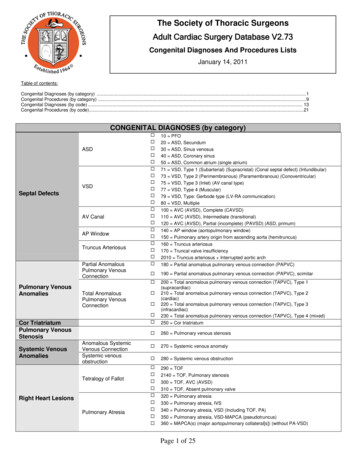
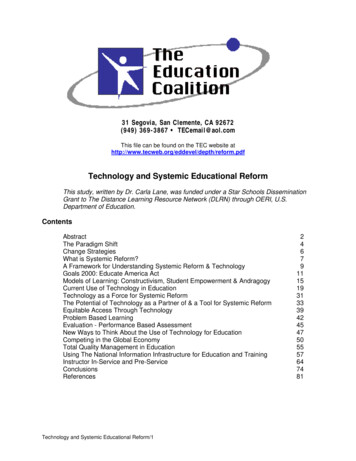
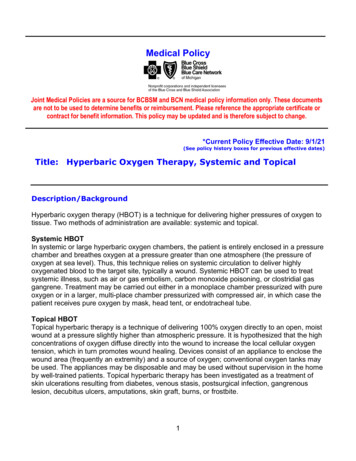
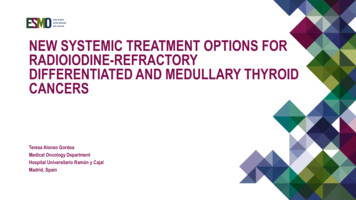
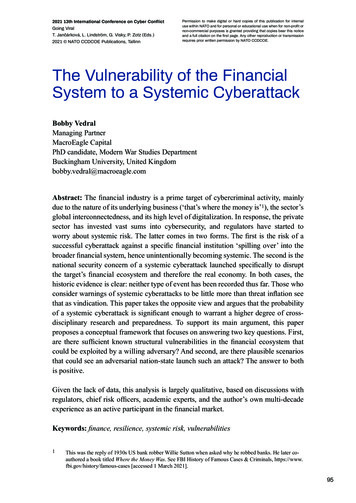



![Change Management Process For [Project Name] - West Virginia](/img/32/change-20management-20process-2003-2022-202012.jpg)

